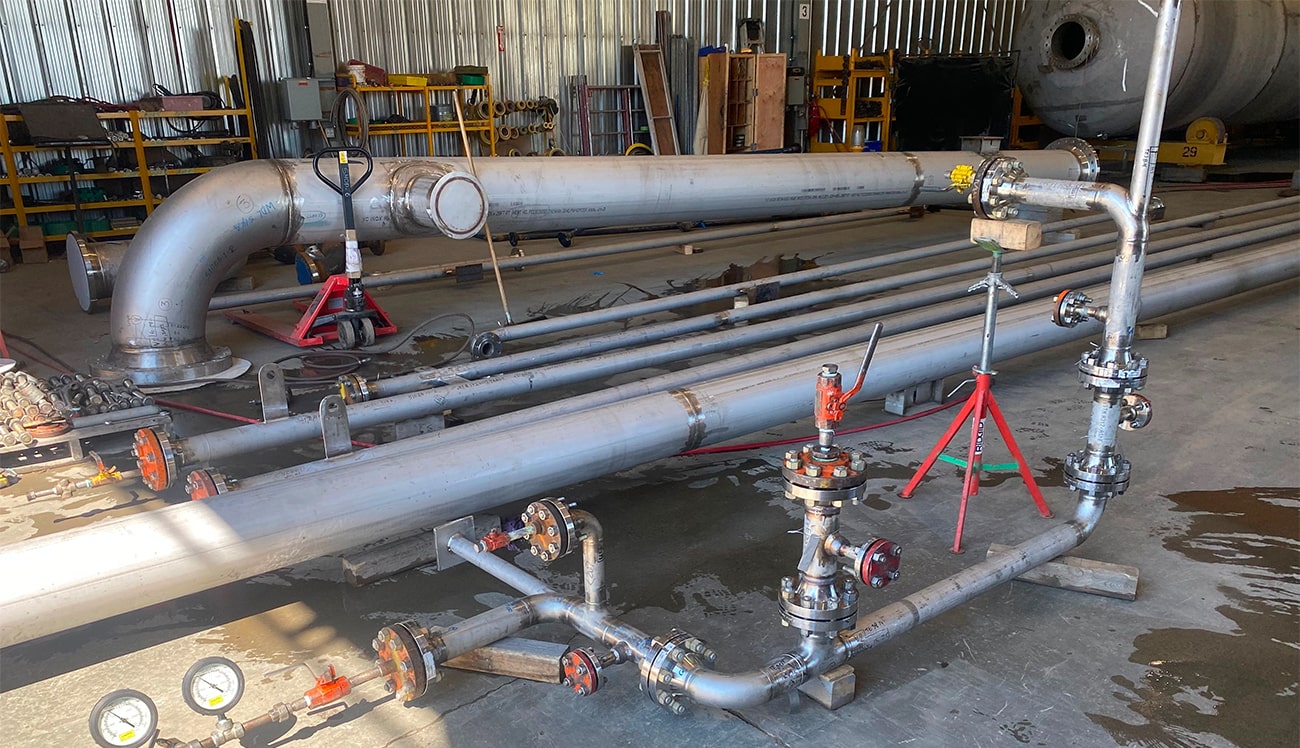Simplify Your Task: Reliable Pipeline Welding Inspection Experts at Your Solution
Simplify Your Task: Reliable Pipeline Welding Inspection Experts at Your Solution
Blog Article
Comprehensive Review of Pipeline Welding Examination Procedures
Pipeline welding evaluation treatments play a crucial role in guaranteeing that welded links satisfy rigorous sector criteria and specifications. From meticulous pre-welding evaluations to detailed post-weld assessments, a distinct evaluation procedure is crucial for keeping the structural stability of pipes.
Pre-welding Examination Preparations
Before starting the welding procedure, extensive pre-welding inspection prep work are vital to ensure the stability and top quality of the weld joint. These prep work include a thorough exam of the products to be welded, the welding tools, and the workplace. The materials must be evaluated for any type of issues, contaminants, or incongruities that might endanger the weld. This consists of monitoring for correct product qualities, dimensions, and surface area problems. Pipeline Welding Inspection. In addition, the welding devices requires to be checked to confirm that it remains in excellent functioning problem, calibrated properly, and ideal for the particular welding process. Any kind of concerns with the tools need to be addressed quickly to prevent problems in the weld. Last but not least, the workplace should be reviewed for tidiness, proper air flow, and precaution to ensure a conducive setup for the welding operation. By carrying out detailed pre-welding inspection preparations, prospective concerns can be determined and dealt with early, bring about dependable and top notch weld joints.
Welding Treatment Credentials
Comprehensive pre-welding assessment prep work lay the foundation for the critical process of Welding Treatment Qualification, guaranteeing the honesty and quality of the weld joint. Welding Procedure Qualification (WPQ) is a crucial step in the welding process that includes testing and licensing welding treatments to ensure they meet details standards and requirements. The WPQ process normally consists of welding procedure specification growth, welding procedure certification screening, and documentation of the outcomes.
Throughout welding procedure spec advancement, necessary details such as the welding procedure, welding materials, joint style, and welding criteria are defined to produce a thorough treatment. Subsequently, welding treatment credentials screening is performed to validate the recommended procedure's integrity. This screening frequently includes welding test coupons that go through numerous mechanical and non-destructive examinations to analyze the weld's top quality and adherence to the specified standards.
In-process Weld Inspection
During the welding procedure, in-process weld evaluation plays a crucial function in making certain the high quality and integrity of the weld joint - Pipeline Welding Inspection. This kind of assessment involves checking the welding parameters, analyzing the weld bead formation, and identifying any type of potential flaws hop over to here or gaps as they occur. By performing in-process weld assessments, welding drivers can without delay deal with any kind of concerns that may occur, consequently guaranteeing and avoiding additional flaws that the last weld fulfills the required requirements
Common techniques utilized for in-process weld examination consist of aesthetic assessment, liquid penetrant screening, magnetic bit testing, ultrasonic testing, and radiographic screening. Overall, in-process weld assessment is vital for keeping the high quality and integrity of bonded pipes.
Non-destructive Screening (NDT)
Non-destructive Screening (NDT) is a crucial technique utilized in pipe welding inspection to examine the stability of weld joints without triggering damage to the bonded framework. By utilizing different NDT methods, inspectors can assess the quality of welds and identify any kind of issues or gaps that might compromise the architectural strength of the pipeline. Usual NDT methods used in pipe welding examination include Radiographic Testing (RT), Ultrasonic Screening (UT), Magnetic Particle Evaluating (MPT), Fluid Penetrant Screening (LPT), and Visual Testing (VT)
RT involves the usage of X-rays or gamma rays to generate images of the inner structure of the weld, permitting assessors to spot defects such as porosity, cracks, or insufficient fusion. Additionally, VT includes aesthetic assessment of welds to recognize any type of visible blemishes.
Post-weld Inspection and Documentation


Paperwork of post-weld evaluation searchings for is essential for maintaining high quality control records and guaranteeing compliance with industry criteria and guidelines. Thorough records should include info regarding the examination approaches utilized, the location and nature of any flaws discovered, and any corrective actions taken - Pipeline Welding Inspection. Correct documentation not just works as a record of the weld's quality however also help in future upkeep and assessment procedures
Verdict

In verdict, pipe go now welding evaluation treatments play a critical function in making certain the quality and honesty of welds. On the whole, adherence to proper assessment methods is essential to the success of pipeline welding jobs.
From careful pre-welding examinations to detailed post-weld analyses, a well-defined inspection process is essential for preserving the architectural sturdiness of pipes. By performing in-process weld inspections, welding drivers can quickly deal with any kind of issues that might arise, thus guaranteeing and avoiding more flaws that the final weld meets the required specs.
Typical approaches used for in-process weld assessment include visual assessment, liquid penetrant screening, magnetic fragment testing, ultrasonic screening, and radiographic testing.Non-destructive Testing (NDT) is a critical approach employed in pipe welding evaluation to examine the stability of weld joints without triggering damage to the bonded structure. Post-weld examination entails various approaches to examine the welds for problems, including aesthetic assessment, color penetrant screening, magnetic bit screening, ultrasonic screening, and radiographic testing.
Report this page